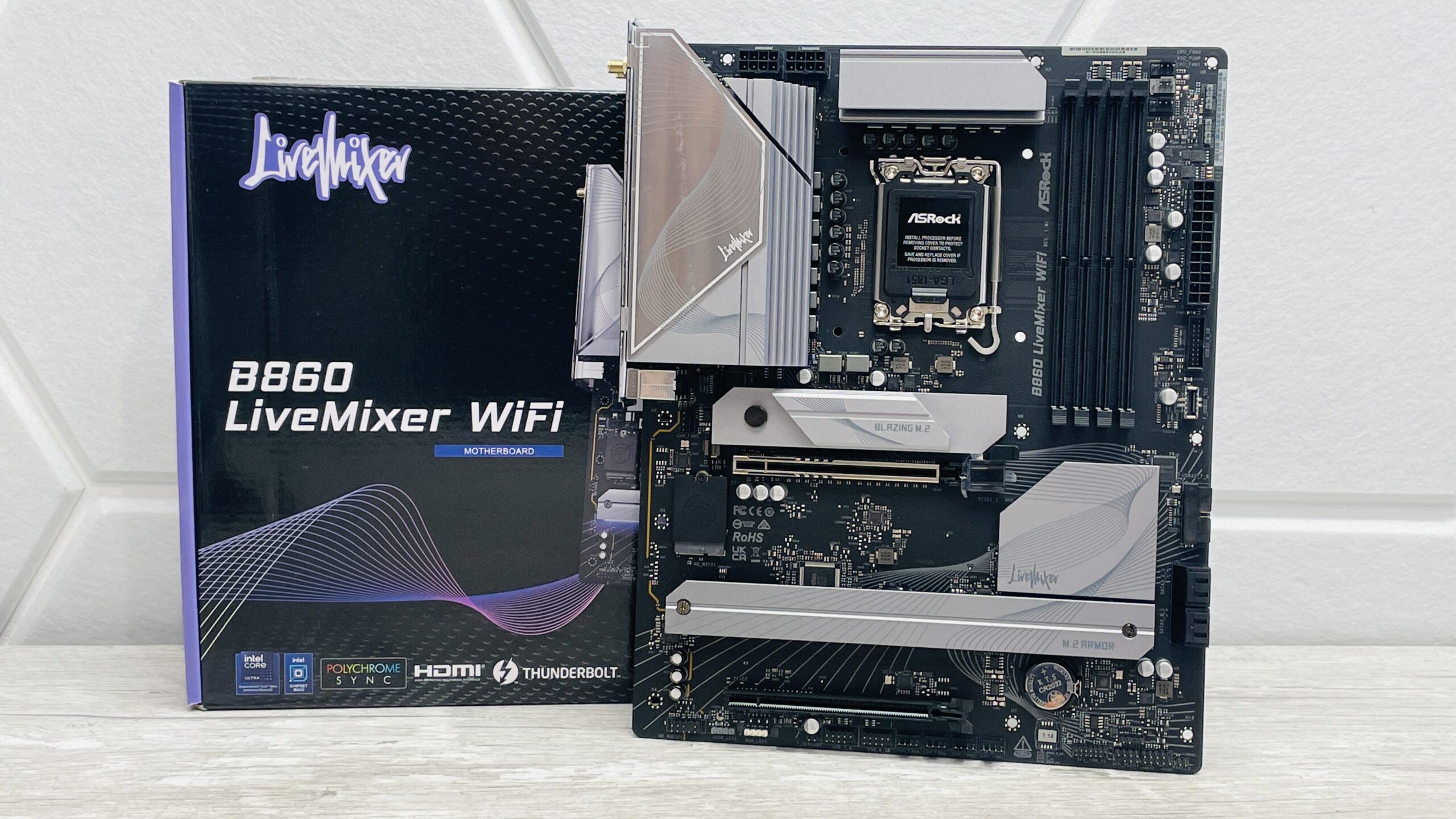Expensive motherboards are all very well, but if you just want a solid base for a decent PC, but still want a few cutting-edge features, then dipping below $200 can be risky. Features are cut from certain areas to lower the price tag, but with Intel and AMD’s mid-range chipset motherboards now a few months old, prices are keener than ever if you’re looking to upgrade or build a new PC. ASRock’s B860 LiveMixer Wi-Fi actually leaves you with change from $200 and at first glance, doesn’t seem to have decimated its feature set to get there either.
This is partly thanks to the board trying to live up to its name. ASRock claims the B860 LiveMixer Wi-Fi is designed for creators and makes a big deal on the product page about connectivity and a quick glance over the specifications reveals important areas such as audio and Thunderbolt 4 support match more expensive boards and certainly give it scope to appeal as a budget-conscious board for creators.
It certainly doesn’t look like it costs less than $200 either with decent-sized heatsinks for the VRMs and M.2 SSDs and ASRock as even included RGB lighting beneath the lower M.2 heatsink too. If you’re considering an Intel motherboard at this point, you’ve hopefully mulled over the question of whether to opt for AMD’s generally faster Ryzen processors already, and perhaps even the fact that you can’t overclock an Intel Core Ultra processor using a B860 chipset motherboard either. If neither of those things are dealbreakers then keep reading.
As usual the RGB lighting underneath the large bottom M.2 heatsink are set to color cycle mode as standard, but can be controlled in ASRock’s software or if you prefer, switched off in the EFI. The PCB is otherwise quite unassuming, with purple/grey heatsinks and plenty of space thanks to a lack of features such as LED POST code displays, buttons and additional M.2 ports and heatsinks.
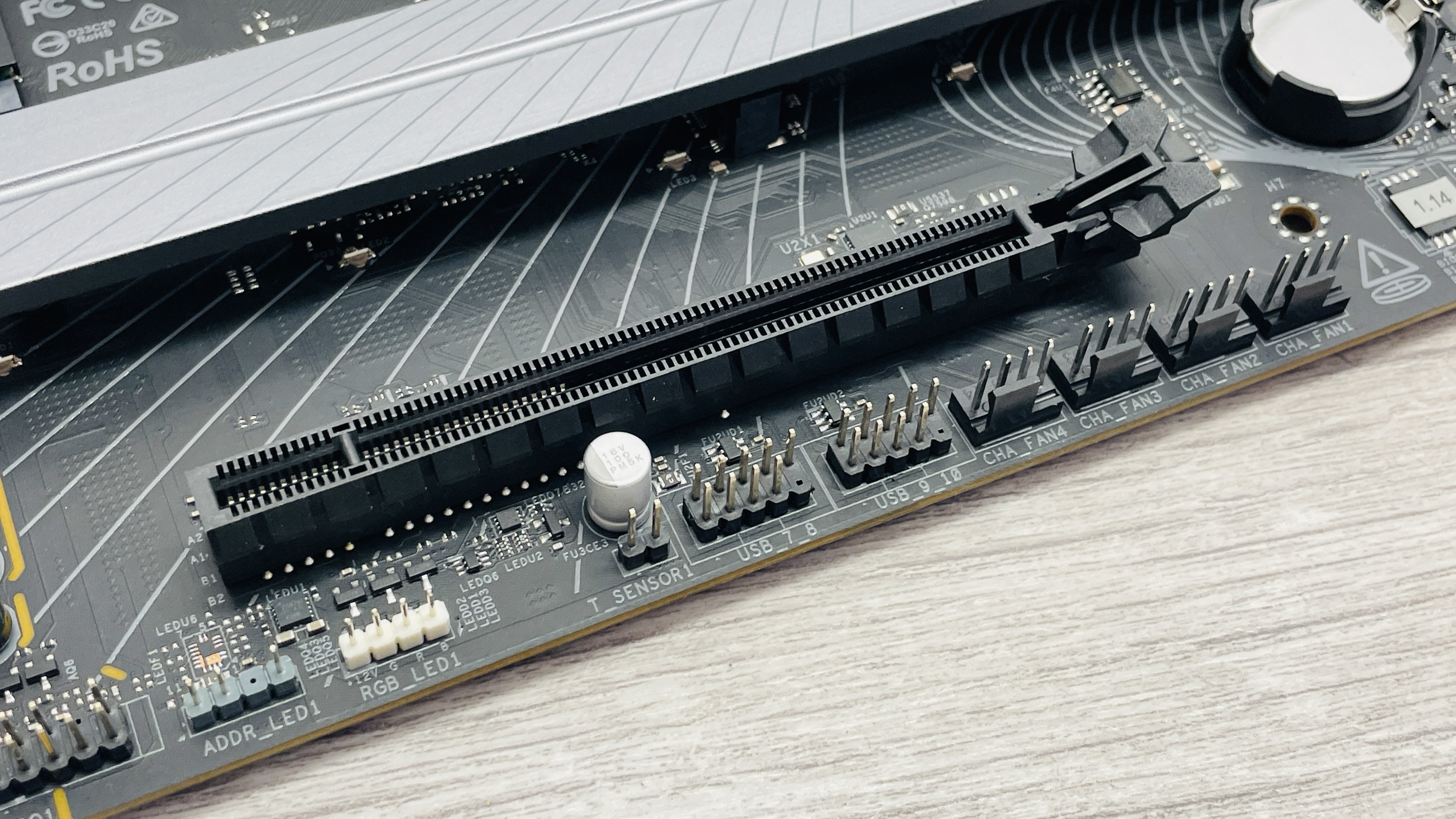
Socket: Intel LGA1851
Chipset: Intel B860
CPU compatibility: Intel Core Ultra 200 desktop
Form factor: ATX
Memory support: DDR5-4800 to DDR5-8666+(OC), up to 256 GB
Storage: 3x M.2, 4x SATA
USB (rear): 1x Thunderbolt 4 Type-C 40 Gbps, 6x USB 3.0 Type-A 5 Gbps, 6x USB 2.0
Display: 1 x Thunderbolt 4, 1x HDMI
Networking: Realtek 2.5G LAN, Wi-Fi 6E
Audio: Realtek ALC1220
Price: $190 | £190 | AU$383
Underneath the VRM heatsinks is a relatively modest 12+1+1+1+1 phase power delivery, but with the worst case scenario being a stock speed Core Ultra 9 285K, it should be more than up to the task. The only other slip from what we expect to see on current motherboards us Wi-Fi 6E as opposed to Wi-Fi 7, but the likelihood is your home Wi-Fi probably won’t meet that standard for another year or two at least and if you end up needing it, you can always swap out the Wi-Fi module.
The rest of the specification is impressive for the price. The audio codec is often Realtek’s aging ALC897 at this price, but ASRock has somehow managed to shoehorn in ALC1220, which is much more capable. You still get three M.2 ports with one being PCIe 5.0, while the primary PCIe slot is also PCIe 5.0 compatible and has a tool-free heatsink. Thunderbolt support used to mean having to chase your wallet around the house, but the ASRock B860 LiveMixer Wi-Fi offers it despite its sub $200 price tag and you also get 2.5G Ethernet too.
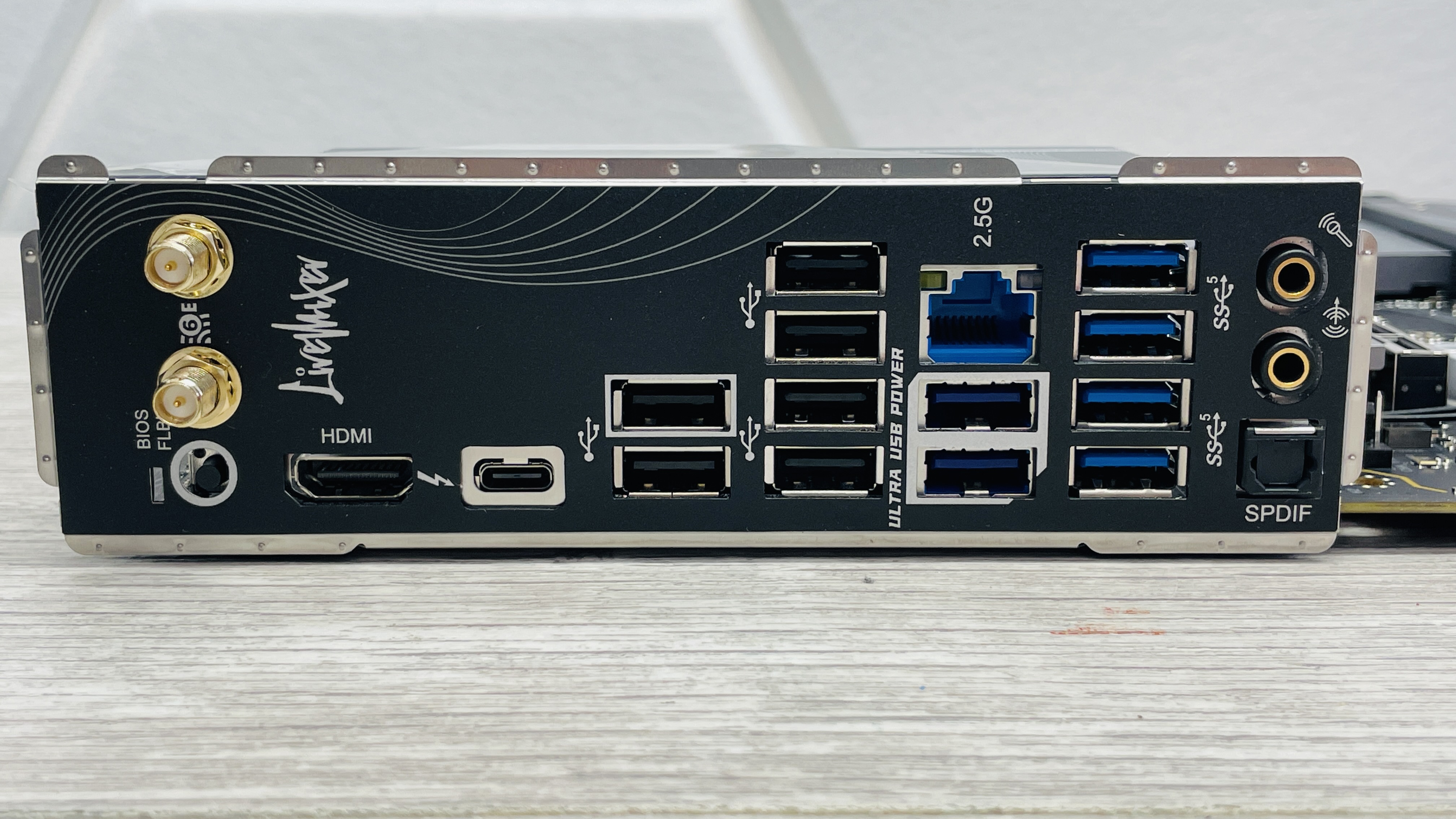
The rear I/O panel might not have many other ultra high-speed USB ports, but it does have one of the biggest collection of Type-A USB ports we’ve ever seen on a motherboard, with a total of 12 and six of those are USB 3.0. Sadly, the front panel Type-C port is only rated at USB 3.0 and it hasn’t also increased SATA ports, but these are widely seen as feature in its twilight years.
Still ASRock hasn’t done what others have and cut the typical four to two, so you can still power a bunch of hard disks. ASRock’s EFI and software are pretty basic, though, and lack the polish of other manufacturers both in terms of features and visual appeal, but they’re still easy to use and work well.
PC Gamer test rig
CPU: Intel Core Ultra 9 285K | Cooler: Asus ROG Ryujin III 360 ARGB Extreme | RAM: 32 GB Corsair Vengeance Pro DDR5-6000 | Storage: 2 TB Corsair MP700 | PSU: MSI MAG AB50GL 850 W | OS: Windows 11 24H2 | Chassis: Open platform | Monitor: Dell U2415
Perhaps the most impressive parts of the B860 LiveMixer Wi-Fi were its temperatures. The VRM temperature barely topped 40°C with one of the lowest results we’ve seen and equally cool was its chipset, again undercutting every other board we’ve looked at recently at just 31°C. it even managed to tame out toasty PCIe 5.0 SSD, which was a good seven degrees away from throttling even after a lengthy stress test. Clearly, the M.2 and VRM heatsinks do a great job.
Cyberpunk 2077 has received a major update recently, which might go some way to explaining the great result we saw at 1080p of an average of 115fps, while the Baldur’s Gate 3 test also offered chart-topping numbers for our Core Ultra 9 285K. Factorio, Blender and Cinebench were less impressive, though, but only a little off the average, for example with the Cinebench R24 multi-core test score of 2,301 sitting around 100 points lower than the ASRock Z890 Steel Legend Wi-Fi and Gigabyte Z890 Aorus Elite WiFi7 Ice. It wasn’t being particularly power frugal here either, with its average and peak CPU package power of 221 W and 230 W in our stress tests being very similar to other LGA1851 motherboards.
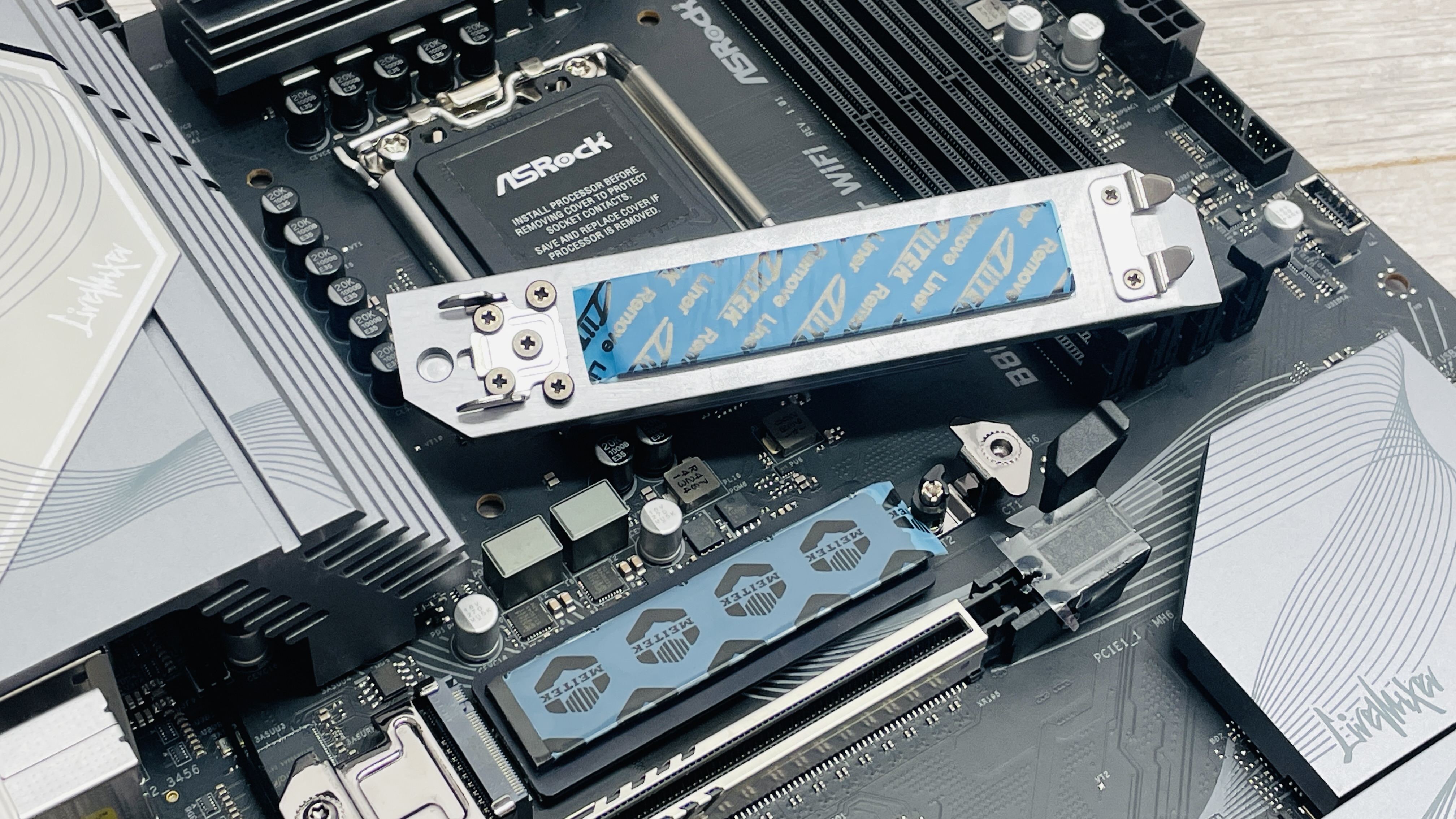
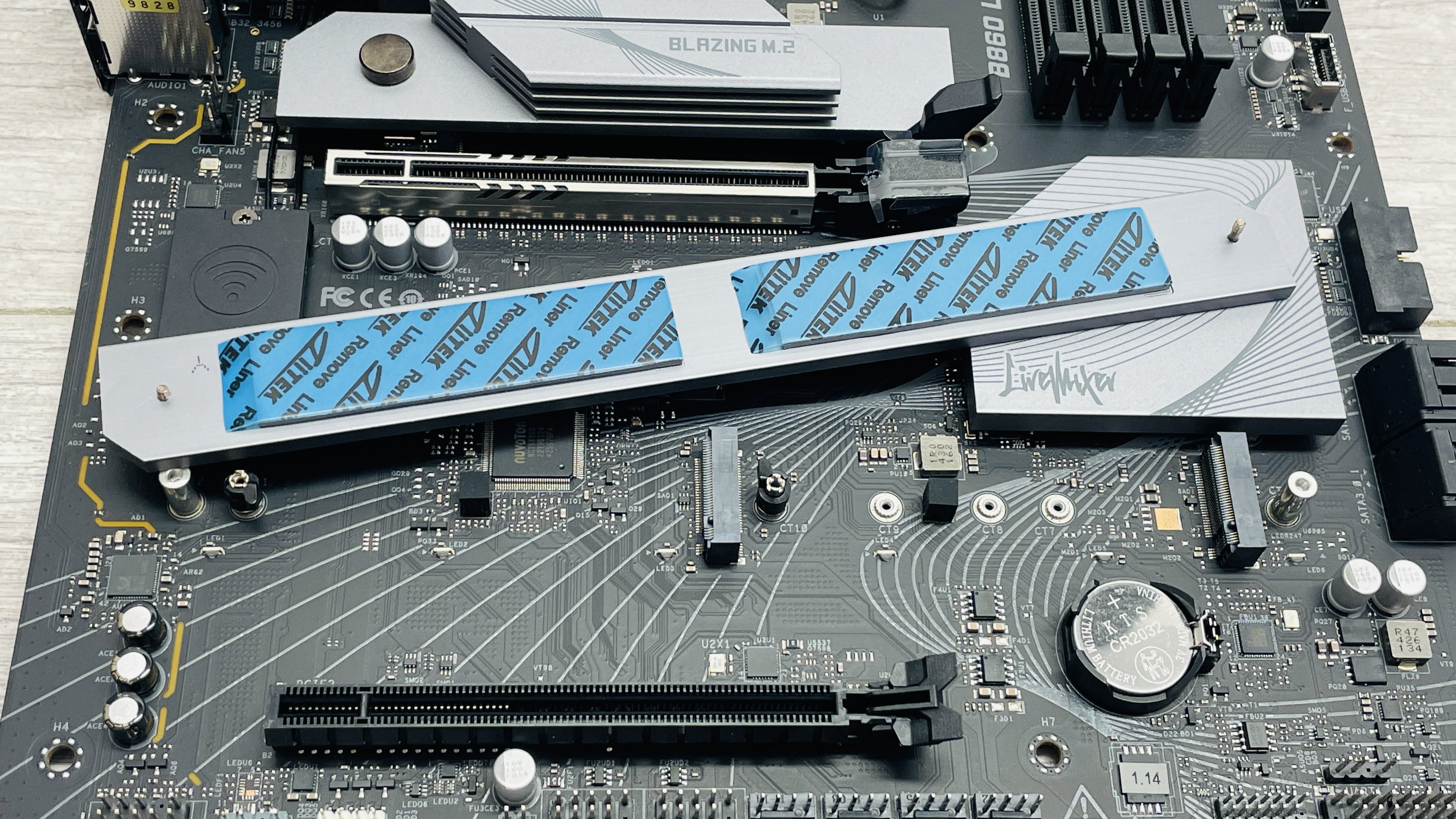
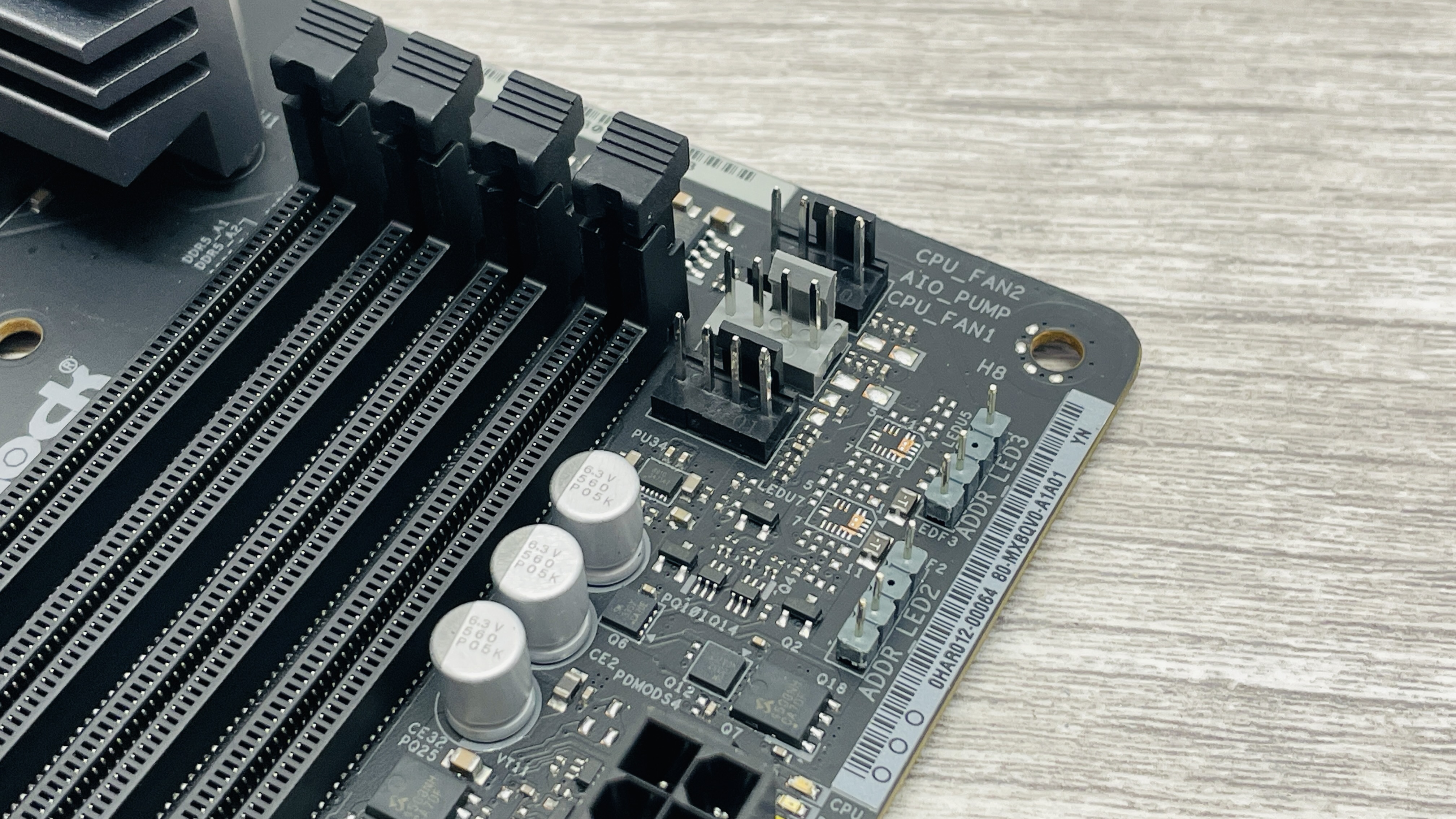
✅ You want a solid motherboard for Intel Core Ultra CPUs for less than $200: It has great temperatures all round and a solid feature set that includes Thunderbolt 4 and PCIe 5 M.2 and GPU support plus an army of USB ports.
❌ You want to overclock: Sadly you cannot overclock Intel’s Core Ultra CPUs using any B860 chipset motherboards, so if that’s on your list of things to do you’ll need to look elsewhere
There really is very little to get hung up about with the ASRock B860 LiveMixer Wi-Fi. Its only downsides are a mediocre EFI and software and that, due to its chipset, it does not support overclocking, and this is actually a shame as Intel’s K-series Core Ultra processors respond quite well to some tweaking and the board also has plenty of VRM cooling headroom. It also lacks Wi-Fi 7 and anything faster than USB 3.0 by way of Type-A USB ports.
However, it makes up for that with a massive 12 Type-A ports on the rear I/O panel in addition to a 40 Gbps Type-C Thunderbolt 4 port, includes audio that’s on par with far more expensive boards including an optical output and its M.2 SSD and VRM cooling were exceptional. We’re not quite sure how ASRock managed it, but if you’re looking for a rock solid base for an Intel Core Ultra system, the ASRock B860 LiveMixer Wi-Fi looks good, has loads of connectivity and can be relied on to keep your hardware cool too.
